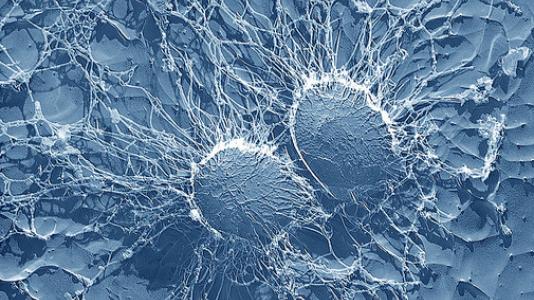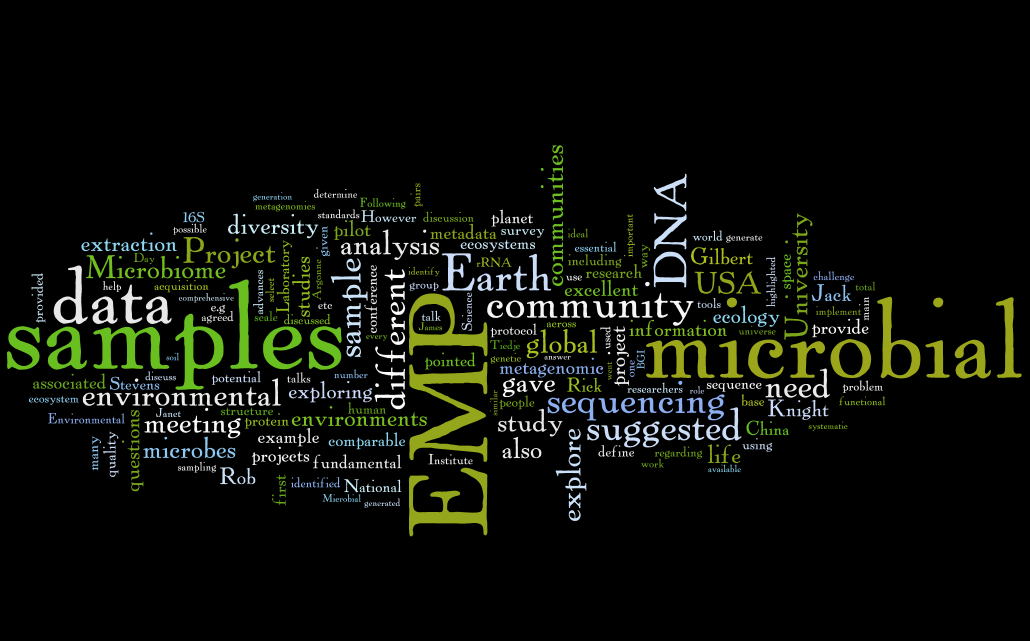
An initiative called the Earth Microbiome Project, led by Jack Gilbert at the U.S. Department of Energy’s Argonne National Laboratory and including scientists all over the world, is tackling the massive task of cataloguing the DNA of all those microbes. The knowledge could potentially one day help us understand climate change, increase world food production and even avoid unnecessary surgeries.
Microbes play a tremendous role in human health, but what we know about them covers just the tiniest tip of the iceberg. They also perform 99% of the nutrient and gas cycling in the world; this cycling is vitally important to the planet and by extension our food, our industry and the economy.
“For example, what a cubic meter of soil, full of microbes, does in one day—breaking down chemicals, storing and releasing carbon, creating usable nutrients for plants—would cost us $500 billion to do by human methods,” Gilbert said. “We want to learn their tricks.”
The project is the largest sequencing project ever begun. The Human Genome Project mapped 3 billion base pairs of DNA; the Earth Microbiome Project’s pilot study aims to map 35 trillion base pairs. And that’s just the beginning.
Metagenomics is a relatively new field that takes DNA directly from an environmental sample, yielding a genetic stew containing almost every organism’s DNA. The technique grew out of concern that earlier methods, which picked certain organisms to culture, clone and sequence, left out many others.
Since microbial populations vary wildly according to conditions—“Even the microbe communities living on the D and L keys of my keyboard are totally different,” Gilbert says—the project must first divide Earth into biomes, or areas where environmental conditions are similar. Scientists will catalogue the number, type and frequency of the microbes that live in each location, using samples provided by researchers from all over the globe who are studying those areas.
Extensively mapping a microbe community can allow scientists to predict how an entire system would react to changes.
For example, after intensively sampling the bacteria in the English Channel, Gilbert says his group can now forecast the levels of phytoplankton—microscopic plants living in the sea—several months in advance. Phytoplankton levels affect the entire food chain, all the way up to large commercial fish like bass and cod. Thus, scientists could forecast which kinds of fish will be most prevalent in the coming year.
More studies within the project focus on microbes in soil. Soil bacteria affect crop production around the world; even the taste of wine differs according to the microbes in dirt and on grapes.
Soil bacteria also play a larger role on Earth: regulating the amounts of nitrogen, oxygen, carbon and other elements.
“As the Arctic tundra heats up, carbon stored in its depths begins to move. If it joins the atmosphere, it could contribute to rising global levels of carbon dioxide,” Gilbert explained. “And microbes affect where it goes—whether it is released into the air or absorbed by lakes, the oceans or soil. Understanding what tundra microbes do during warming will let us get a better idea of how it might affect climate.”
In addition, the microbes living in our bodies are intricately tied with our well-being, and Gilbert thinks they could become a powerful diagnostic test. The methods developed by scientists at Argonne and other facilities during the Earth Microbiome Project will have considerable ramifications for such fields as medical microbiology, currently the focus of a $165 million National Institute of Health program.
For example, Gilbert and colleagues have plans to test samples taken from surgically removed appendices. A certain percentage of appendectomies are unnecessary—that is, when the appendix is removed, it turns out to be healthy; the patient’s symptoms were caused by something else.
“What if microbe tests, developed by the EMP, when applied to your skin or digestive tract, could pick up telltale signs of appendicitis?” Gilbert said.
The scientists suspect that a person’s microbe population changes when he or she gets sick—and in specific ways. An easy way to sample this would be to collect samples of a patients’ stool and test for microbial conditions that indicate appendicitis, which would help doctors decide whether or not to perform surgery to remove the appendix. To find this specific array, they are testing samples from both healthy and diseased appendices.
The ultimate goal for the project is a publicly-accessible, easy-to-search database of genomics data. But, Gilbert said, getting standard datasets is tricky. There are several methods of extracting DNA from samples, and they give different results: various bacteria are more or less likely to be counted, according to which kinds of chemicals and processes are used.
This often means that data from different scientists and labs can’t be accurately compared.
“So another part of this initiative is to try to develop a standard operating procedure for analyzing and gathering comparable datasets,” Gilbert said.
More information on the project can be found at its website.
The Earth Microbiome Project is a collaborative project, with members from Argonne, Lawrence Berkeley National Laboratory, the University of Chicago, the University of Colorado at Boulder, the University of California-Davis, the University of Southern California, the Center for Ecology and Hydrology in the UK, and the Netherlands Institute for Ecology. The project is also supported by Eppendorf, Illumina, Pacific Biosciences, Luca Technologies, and MoBio.
